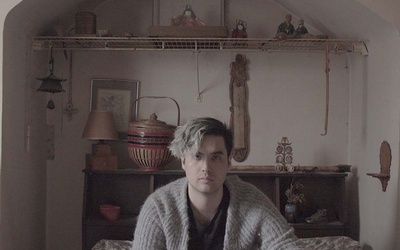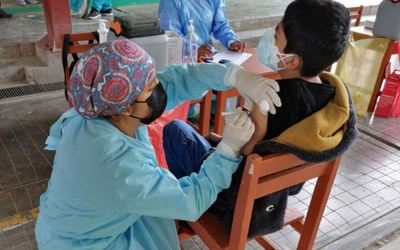Kizuna 2020: Nikkei Kindness and Solidarity During the COVID-19 Pandemic

In Japanese, kizuna means strong emotional bonds. In 2011, we invited our global Nikkei community to contribute to a special series about how Nikkei communities reacted to and supported Japan following the Tohoku earthquake and tsunami. Now, we would like to bring together stories about how Nikkei families and communities are being impacted by, and responding and adjusting to this world crisis.
If you would like to participate, please see our submission guidelines. We welcome submissions in English, Japanese, Spanish, and/or Portuguese, and are seeking diverse stories from around the world. We hope that these stories will help to connect us, creating a time capsule of responses and perspectives from our global Nima-kai community for the future.
* * * * *
Although many events around the world have been cancelled due to the COVID-19 pandemic, we have noticed that many new online only events are being organized. Since they are online, anyone can participate from anywhere in the world. If your Nikkei organization is planning a virtual event, please post it on Discover Nikkei’s Events section! We will also share the events via Twitter @discovernikkei. Hopefully, it will help to connect us in new ways, even as we are all isolated in our homes.
Stories from this series
Nikkei Plus: the showcase of Nikkei entrepreneurs in Peru
April 1, 2022 • Enrique Higa Sakuda
Football always gives you second chances. You lose one Sunday, but the next you can win. Time is not an asset to squander on regrets, but to prepare yourself with the goal of overcoming the next challenge. This is, roughly speaking, how journalist Roger Gonzales Araki deals with things. Like for millions of people around the world, the coronavirus pandemic was a knockout for him: he had to close the family karaoke business. However, Roger knew how to get up …
Japanese Canadian Art in the Time of Covid-19 - Part 10: Toronto Musician Hiroki Tanaka
Dec. 28, 2021 • Norm Masaji Ibuki
Read Part 9 >> Just as it is so sad to hear news of the passing of another Nisei, it is heartening to learn of more and more Japanese Canadian community members in the arts who are coming of age and making their presence known when we need them most. I got to know Hiroki Tanaka’s father, Yusuke (Toronto), born in Sapporo, when I was at the beginning of my own quest in the early 1990s. Yusuke was the acoustic …
Japanese Canadian Art in the Time of Covid-19 - Part 9
Dec. 27, 2021 • Norm Masaji Ibuki
Read Part 8 >> As we approach the second anniversary of Covid, I am conscious of the fragility of these times that we are living through: the new Omicron variant of Covid, eco-disasters in British Columbia (flooding and landslides after a summer of wildfires) and, yes, Covid numbers are climbing again across Canada. It’s time again to take yet another deep breath… In this part, we’re celebrating the artistry of cellist Rachel Mercer (Ottawa, ON) and dancer Mayumi Lashbrook (Toronto, …
“Things should not be the same as before the pandemic because it would mean that I have not learned anything”
Dec. 22, 2021 • Enrique Higa Sakuda
We are already going through the two years of the pandemic and those first weeks of confinement, when people applauded the health workers from their homes for their extraordinary work and naively said that from this disastrous experience we would emerge better people, more united and supportive, They seem like times from a previous life. Today, with rich countries hoarding vaccines while a new variant emerges in Africa, millions of people dead and crowds rejecting masks or getting vaccinated even …
Japanese Canadian Art in the Time of Covid-19 - Part 8: British Columbia edition
Sept. 30, 2021 • Norm Masaji Ibuki
Read Part 7 >> After rereading the responses from this chapter’s featured artists from British Columbia, one issue really stands out for me: Canada’s vast geography and how we are divided into two solitudes—east and west—a lasting legacy of the internment. Vancouver, BC, where our Japanese Canadian story begins, is about 5000 kilometers, a five-day drive, due west from Oakville, Ontario, where I sit now. As a Toronto-born Sansei, my BC-born parents lived in New Westminster and Vancouver. Growing up, …
Nikkei solidarity in times of pandemic
Sept. 17, 2021 • Ricardo G. Hokama
Solidarity is a fundamental human value in our lives and more so, in times of crisis like the ones we are experiencing in the face of the pandemic around the world. We live in a unique moment in these modern times, a time where the Japanese community in Argentina has also committed itself to fight against the common enemy: the new coronavirus, with its impacts on health and society. Faced with this delicate context, solidarity and creativity emerge as the …










































